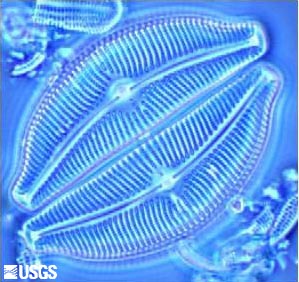- Home
- About S&T
- Taxa/Organisms
- Ecosystems
- Issues
- Methods & Tools
- Reports & Publications
- Location
- Search
Publisher: USGS | Science Center: Upper Midwest Environmental Sciences Center (UMESC, LaCrosse) | Format: URL
www.umesc.usgs.gov — Zebra mussels have caused drastic declines in native clam and mussel populations in some locations. Zebra mussels compete with other invertebrates and young fish for plankton, the primary food source for these groups. UMESC scientists are investigating the effects zebra mussels are having on the riverine ecosystem. This study examines the effects More...

Publisher: USGS | Science Center: Columbia Environmental Research Center (CERC, Columbia) | Format: URL
wwwaux.cerc.cr.usgs.gov — Scientists at the Columbia Environmental Research Center (CERC) have an effective method for determining the amount of contamination in water. This article explains the center's basic approach and also provides a glossary of related technical terms.

Publisher: USGS | Science Center: Forest and Rangeland Ecosystem Science Center (FRESC, Corvallis) | Format: URL
fresc.usgs.gov — The long-delayed Inland Lakes Fishery Inventory for Isle Royale was funded in FY95-97. This project will collect biological/physical/chemical samples as part of that project because such information is a logical component to a fishery survey. The objective of this study is to characterize the zooplankton assemblages in selected park lakes.

Publisher: USGS | Science Center: Western Fisheries Research Center (WFRC, Seattle) | Format: URL
wfrc.usgs.gov — There are approximately 500,000 abandoned mines in the western US. Collectively, these mines pollute rivers, streams, and western reservoirs with millions of tons of metals annually that degrade aquatic habitat and water used by humans for drinking, recreation, and irrigation. However, there is great potential in decreasing or eliminating the flow More...

Publisher: USGS | Science Center: Contaminant Biology | Format: URL
biology.usgs.gov — This web page lists databases related to contaminant research across government agencies and partnerships. Many of the links include access to documented trends in the occurrence of persistent toxic chemicals that may threaten fish and wildlife resources, summaries of the results from aquatic acute toxicity tests, Avian Incident Monitoring, More...

Publisher: USGS | Science Center: Western Fisheries Research Center (WFRC, Seattle) | Format: URL
wfrc.usgs.gov — Artificially maintained water levels within the lake and stresses placed upon the aquifer by well withdrawals facilitate movement of water from the lake into the local ground water system, potentially allowing contaminants to enter the aquifer from the lake. This raises national concern because similar lakeside settings exist throughout the United More...

Publisher: USGS | Science Center: Florida Integrated Science Center (FISC, Gainesville) | Format: URL
fl.biology.usgs.gov — This web resource is a map representation of the distribution of zebra and quagga mussels in U.S. lakes. Zebra mussels were first detected in 1988 in Lake St. Clair, located between Lake Huron and Lake Erie. Within just a few years, they spread into all five of the Great Lakes. Since then, zebra mussels have spread into many large navigable More...

Publisher: USGS | Science Center: Florida Integrated Science Center (FISC, Gainesville) | Format: URL
fl.biology.usgs.gov — Southeastern Aquatic Fauna studied at the Center are freshwater, anadromous and estuarine fishes, and freshwater mollusks, with expertise in the study and conservation of the southeastern aquatic fauna, including freshwater fishes and mussels. The Southeast Aquatic Faunal Team provides critical information necessary to assess the status of this More...

Publisher: USGS | Science Center: Biological Informatics | Format: URL
biology.usgs.gov — This page presents samples of genetics and genomics research from the USGS Biological Resources Discipline about the conservation genetics of fish.

Publisher: USGS | Science Center: Alaska Science Center (ASC, Anchorage) | Format: URL
www.absc.usgs.gov — Ecological Genetics of the Lake Clark Sockeye Salmon (Oncorhynchus nerka) characterizes the population structure and genetic diversity. This issue overview aids managers in defining and prioritizing conservation units of sockeye salmon within Lake Clark National Park and Preserve.

Publisher: USGS | Science Center: Leetown Science Center (LSC, Kearneysville) | Format: URL
www.lsc.usgs.gov — Freshwater mussels are declining rapidly in response to habitat degradation associated with anthropogenic changes. Williams et. al. (1993) reported that 213 of the 297 recognized taxa are considered endangered, threatened, or of special concern. There is a documented need for BRD centers to provide guidance on freshwater mussel ecology in general, More...

Publisher: USGS | Science Center: Western Fisheries Research Center (WFRC, Seattle) | Format: URL
wfrc.usgs.gov — Bull trout in the western United States are now listed as threatened under the Endangered Species Act. One cause of bull trout population declines is fish passage issues caused by dams and diversion structures. In order to best design or modify culverts and other fish passage structures in watersheds where bull trout are present, baseline swimming More...
